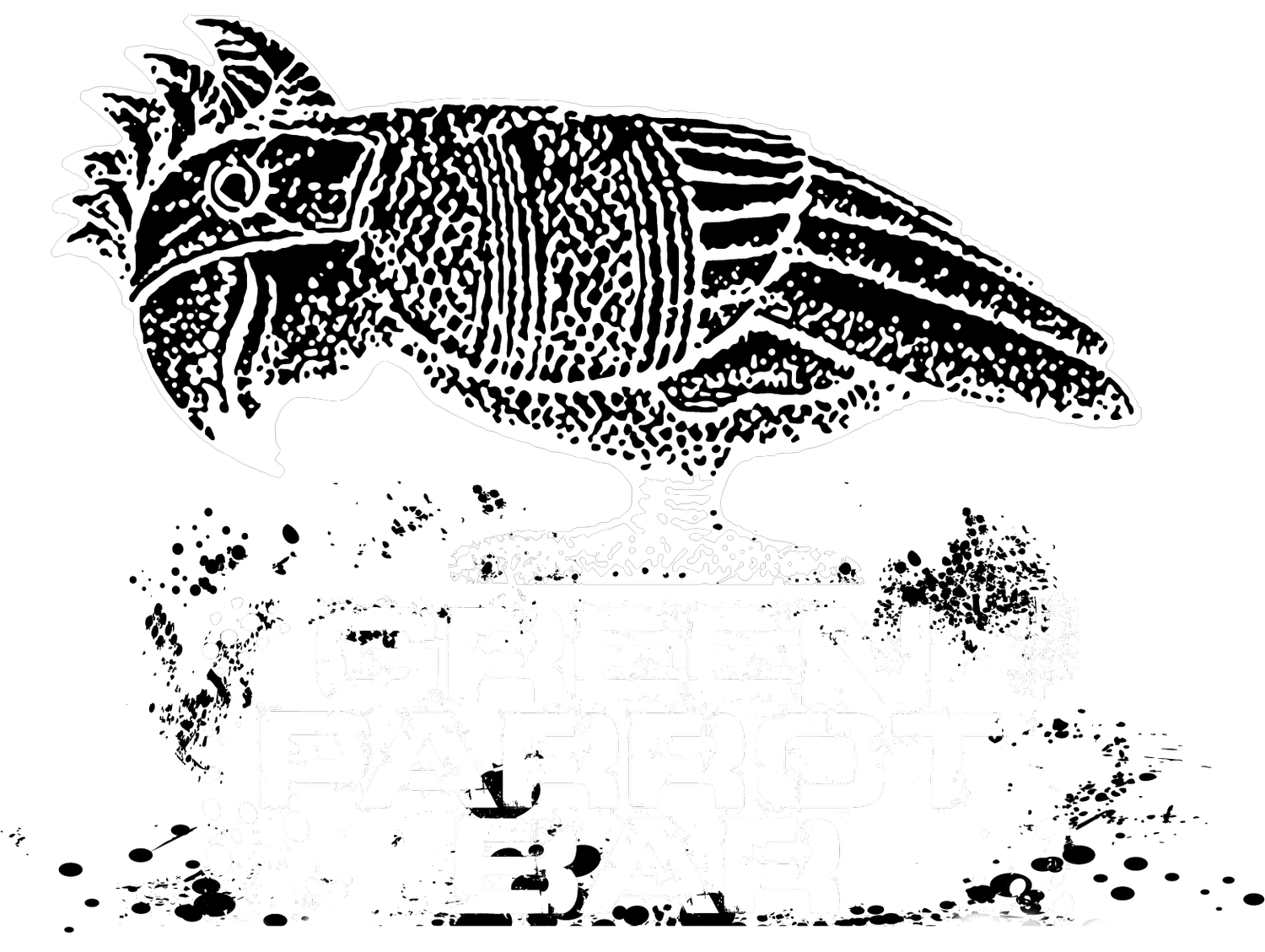Since 1890
The Parrot is a jury of non-judging peers, a rugged and ragged council of friends. It is a place of hi-jinks and misadventures, of understated kindnesses, and everyday miracles. It has seen all manner of human exploits, from poetry slams to divorce celebrations, from memorial services to hurricane parties and pet birthday bashes, from tattoo contests to fundraising benefits.
The Green Parrot is more than a bar; it is a Key West icon; it is Key West. It has been so many things, to so many people, for so many years. And that spirit will never change.
With tourism still a lean, mostly-unrealized affair, Judy Sullivan, a young, determined, ahead-of-her-time woman, who came to Key West in the late sixties, put her finger to the wind and astutely taking note, bought the bunker-like, submarine-sailor's Brown Derby, christened it The Green Parrot, promptly blew out the glass-block windows for open-air shutters, tossed the AC for ceiling fans, commissioned bartender Saul Paul Stewart to paint Smirk, the first art to adorn walls that up to that point had held only a few beer ads and a bullet-riddled snow shovel.
When it became clear to her a Navy-exodus was in fact well under way with sailors being replaced by hippies looking for cheap rent and abundant weed, she ran an open-to-close 4-shots-of-tequila-for-a dollar-special that helped create what one national magazine described at the time as one of the "great freak-bars in America", overnight transforming the Navy hangout into a freshly-minted off-off Duval cut-rate neighborhood hippie-hang Green Parrot, with a built-in offbeat cast of regulars perfectly described by our friend and neighbor, author Joy Williams, “as an engagingly louche clientele.
Some two decades later, another visionary, this one the Minnesotan Jim Bean, with his wife Linda, were the next to purchase the bar, on his birthday in 1983, using money he had squirreled away with dreams of building an enclosed porch on his house at the lake. Key West benefited greatly by his decision to go with the bar and not the porch.
Thus began their nearly 3 decade-long love affair with this very local and sometimes rowdy corner saloon…
IIn 1890, on the southeast corner of Southard and Whitehead Streets, diagonally across from the Monroe County Courthouse, erected that same year, Antonio Sanchez opened a grocery store.
Sanchez Corner, as Antonio's store was called, would remain such until the start of World War II, when it became the Brown Derby, a bar succinctly described in the Key West Citizen of the day as "an air conditioned sailor's bar".
Remaining a bar, through several proprietorships, throughout the war years and beyond, The Brown Derby gained the distinction of being the submarine sailors bar in Key West.
The Navy's eventual departure in the early 1970s created a vacuum that was promptly filled as Key West became a haven for hippies, bikers, vagabonds, and free spirits of all kinds, fueled by tropical breezes, cheap-rents, and a history of eccentricity that fostered a laissez faire outlook on life in general.
While the Beans' changes were more subtle than Judy's brash makeover, theirs were destined to be long-lasting, bearing their stamp to this day: making live music our corner's calling-card, and, no less-appreciated, (thank you Linda) air-conditioning the ladies room. They could not have been prouder when, in 2000, Playboy Magazine named The Green Parrot one of “The Best Bars in America,” stating that “The search for the definitive Key West Saloon ends at James Bean’s Green Parrot where…the management works tirelessly to avoid progress.”
The year 2010, with Jim Bean's passing, another chapter ended, after an almost 30-year partnership, as the Beans' long-time partner John Vagnoni became partners with Philadelphia entrepreneur Pat Croce, who through various enterprises, including a world-famous Pirate Museum, has displayed a reverence for the provenance of things, where they came from and how they got here, so, fittingly, it followed that what Judy and the Beans had left, Croce embraced: the great music, as well as the simple concept of a place where people can create new memories, and a place where anything is possible, anytime.



